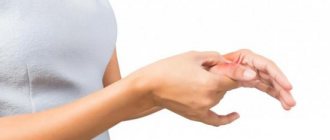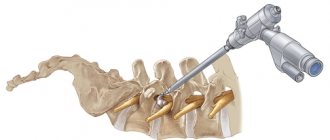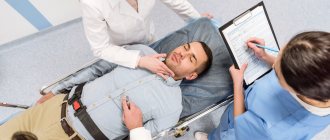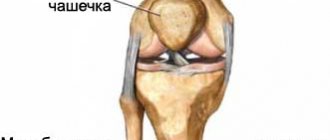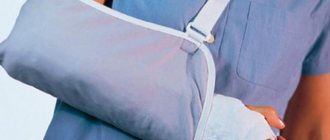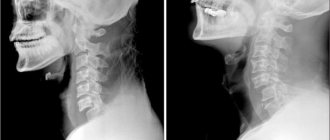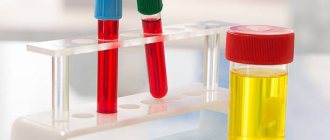A fissure in the spine is a serious pathology that is not much different from a full-fledged fracture. In simple terms, a crack in bone tissue means that there are no signs of a final breakdown of integrity. But it can arise at any moment. Therefore, immobilization measures for bone cracks are mandatory.
You can find out more reliable information about the symptoms and treatment of spinal fissures from the material presented to your attention. It also talks about the potential causes of this bone lesion. Methods for restoring the health of the spinal column using manual therapy methods are presented.
So, a crack in the spine can occur in its different structures:
- most often it is determined in the fibrous ring of the intervertebral disc, which is dehydrated against the background of a long course of degenerative dystrophic disease (osteochondrosis);
- in second place in terms of frequency of diagnosis is a crack in the spinous or arcuate process of the vertebra - the injury is often found in young people leading an active, mobile lifestyle;
- in third place, radiologists confidently locate cracks in the vertebral bodies, but these types of injuries are often diagnosed in patients who have suffered an accident or in elderly people with developing osteoporosis.
A crack is a violation of the integrity of bone tissue without displacement and divergence of fragments. Those. There is no complete violation of integrity. The damaged element retains its physiological shape, but does not have the same properties as completely healthy tissue. With the continuation of traumatic effects of even low intensity, the crack always passes into the stage of a full fracture. It differs in that it causes complete separation of bone tissue fragments.
With regard to the fibrous ring of the intervertebral disc, we can say that if the doctor’s recommendations are not followed, the crack can at any time go into the stage of extrusion (rupture) with the formation of an intervertebral hernia.
Do not underestimate the seriousness of your condition when diagnosing a fissure in the spine; in fact, this can lead to a complete fracture and paralysis of the body. Follow all doctor's recommendations. Get full treatment. Be sure to carry out rehabilitation in order to restore the functionality of all tissues of the spinal column. If this stage is skipped, then there is a high probability of developing a variety of negative health consequences.
In Moscow, to undergo rehabilitation after suffering a fissure in the spine, you can contact our manual therapy clinic. Experienced doctors conduct consultations here. You can make an appointment right now for a free appointment with a vertebrologist. To do this, fill out the registration form located at the bottom of the page.
During your initial free consultation, the doctor will conduct a full examination, review your medical documentation and give individual recommendations for comprehensive treatment and rehabilitation with complete restoration of all functions of the spinal column.
general characteristics
The term “fissure in the spine” is not in any medical reference book. This is due to the fact that the pathological condition involves an incomplete fracture of the ridge. In some cases, the severity of the condition is not inferior to a full-fledged fracture, so ignoring such a diagnosis is dangerous. The crack can be localized on the vertebral body, process or arch. The injury usually does not affect the spinal cord since there is no displacement, but it all depends on the nature of the injury.
A crack in a vertebra in most cases appears as a result of compression and is diagnosed using an x-ray. In the image, the doctor notices a violation of the integrity of the bone tissue, which requires long-term treatment. In general, the course takes up to 12 weeks.
Diagnosis of a fracture
When the victim is taken to the hospital, doctors immediately take an X-ray of the spine. If the image demonstrates the presence of a crack, the patient is indicated for additional studies:
- MRI;
- CT;
- myelography.
These diagnostic methods show the condition of the vertebrae and help determine whether the spinal cord is damaged.
Additionally, other diagnostic methods may be required: ultrasound, ECG, blood tests, urine tests.
Reasons for appearance
A crack appears in the spine as a result of strong pressure or compression of bone tissue. A person can receive such a mechanical impact at work, when falling from a height, or even in a fight. The reasons are varied, but the main ones are:
- Road traffic accident.
- Falling from stairs or a high climb onto your back.
- Hitting the spine with a heavy object.
- A heavy object falling on your back.
- A sharp turn of the body.
- Lifting weights without adequate physical training.
- Chronic pathologies that systemically destroy bone or connective tissue (intervertebral discs).
- Age-related changes in the spine.
In general, there are only two reasons for loss of bone tissue integrity: injury or disease. If in the first case external physical influence is required, then in the second a careless rotation of the body is sufficient. Contributing factors include alcohol abuse, increased strength training without specialist supervision, a sedentary lifestyle, excess weight, and lack of treatment for osteochondrosis or arthrosis.
No ads 1
Symptoms
Signs of a crack in the spine directly depend on the nature of the injury. If these are injuries, then the victim feels acute pain or limited mobility, numbness of the limbs. When the cause is pathology or senile changes, patients complain of loss of sensitivity in certain areas of the body, as well as muscle hypertonicity.
The pathological condition is characterized by:
Rehabilitation after a spinal fracture
- Aching pain in the affected area, which manifests itself even at rest.
- Discomfort increases with changes in body position.
- When palpating the painful area, acute discomfort is felt.
- Hypertonicity or tightening of muscle tissue located next to the damaged area.
- Mobility of the area during palpation.
- Acute muscle pain when moving.
- Inability to raise a straight leg while lying on your back without an attack of acute pain.
- Limitation of spinal mobility.
Patients consult a doctor with back pain, stiffness, swelling, hematomas, or changes in gait. Also, the symptoms largely depend on the location of the crack:
- Cervical region. Frequent headaches, flashing “black spots” before the eyes, dizziness, numbness of the arms or shoulders.
- Thoracic department. Persistent impairment of the normal functioning of the upper extremities, frequent cough, girdle pain, problems with respiratory function, angina pectoris.
- Lumbar region. Paresis of the legs, dysfunction of the genital organs, girdle pain in the lower back, paresis of the lower extremities, disruption of the functioning of the internal organs.
During the diagnostic process, the cause of the pathological condition is discovered and a suitable course of treatment is prescribed. It is quite difficult to suspect a crack on your own, since the symptoms are similar to a number of other diseases. Therefore, a comprehensive study is required.
Terminology
Vertebroplasty
is a minimally invasive operation aimed at fixing a vertebral fracture and eliminating pain.
The surgeon inserts a special needle into the body of the broken vertebra, through which bone cement is injected into the vertebra, filling the space between the fragments and hardening within a few minutes. Kyphoplasty
is a similar procedure in which a special balloon, inflated under pressure, is first inserted into the body of the fractured vertebrae. This helps to correct the deformity and the formation of a cavity in the vertebral body.
medical request
Diagnostic procedures
When a patient consults a doctor, it is important to fully describe at what point the symptoms began and what contributed to the injury. If spinal injuries are suspected, the patient is prescribed a number of diagnostic procedures. The following types of hardware techniques allow visualization of a crack in the spine:
- X-ray.
- CT.
- MRI.
Angiography and electroneurography are used as additional techniques if, in addition to the crack, there are concomitant pathological conditions of soft tissues. They allow you to determine the neglect of the situation, assess the progression and condition of blood vessels, soft tissues, and nerve endings.
Falling from a height is one of the most common causes of spinal fractures.
Efficiency and results of kyphoplasty
- Treatment with balloon kyphoplasty helps restore the height of the vertebra, which reduces its deformity. After this procedure, most patients regain normal vertebral activity.
- Even a year after surgery, patients who have undergone surgery to treat a vertebral fracture lead a more active lifestyle.
- Reliability: pain relief, spinal stabilization and restoration of vertebral height after osteoporotic fracture.
- Using a special instrument, the doctor introduces the resulting cavity with a special cementing material polymethyl methacrylate (PMMA), which quickly hardens, which helps stabilize the vertebral bone
bibliography
First aid for injury
If a person was injured in an accident or at home, it is important to know how to help him before the ambulance arrives. There is no need for the patient to try to stand up abruptly, since it is impossible to immediately determine the degree of injury by eye. For some time it is better not to change the position of the body at all. Immobility of the injured area is the key to worsening the injury.
When a victim is injured as a result of a fall, he may experience pain shock for some time, which does not allow him to give an objective assessment of his sensations. He may insist that he is fine and try to get up. To prevent rupture of the spinal cord, first aid is required. It is as follows:
- Transfer the person as carefully as possible onto a stretcher or shield, using a large number of people, to avoid changing the position of the spine.
- Using available means and things, fix the person in one position (cardboard, sheets, tourniquets, corset).
- The neck is fixed using a cotton-gauze collar if the technique for performing the procedure is known, otherwise it is better not to do so as not to cause harm.
- Do not attempt to move or transport the patient to the hospital yourself.
- If a person experiences severe excruciating pain, before doctors arrive, it is allowed to use drugs such as Ibuprofen or Analgin.
Before the ambulance arrives, the severity of the injuries received should be determined. To do this, attention is paid to the presence of clear and coherent speech, clear consciousness, sensitivity of the limbs, pulse rate and blood pressure. All this data is transmitted to doctors to quickly provide the necessary assistance.
Stages of kyphoplasty
Insertion of the trocar under fluoroscopy control, filling the resulting cavity with bone cement. The operation is performed under local anesthesia and is a typical minimally invasive procedure, without scars or stitches. © via4spine
- During kyphoplasty or vertebroplasty, the patient lies face down on their stomach.
- General anesthesia or local anesthesia.
- Minimum skin incision (1cm).
- Treatment of the skin using a trocar, which, under fluoroscopy control, moves to the fracture site.
- A special balloon is inserted through the trocar and filled with a radiopaque solution.
- The balloon is inflated until the natural height of the damaged vertebral bodies is restored.
- Removing the cylinder.
- Filling the resulting cavity with bone cement through a trocar.
- The bone cement is fixed within 10 minutes.
Treatment of a fissure in the spine
Treatment of a crack in the spine begins with establishing the location and extent of damage to the bone tissue. Depending on the results obtained, adequate therapy is prescribed, aimed at improving well-being, eliminating autonomic disorders and complete rehabilitation. The course includes taking medications, visiting a physiotherapist and exercise therapy. Full recovery from such an injury occurs in about a year.
As many people as possible should be involved in shifting a person with an injury
Drug therapy
If there is acute pain or inflammation, swelling, the doctor prescribes a set of drugs aimed at relieving unpleasant symptoms. Typically it includes the following groups:
- Analgesics (“Paracetamol”, “Analgin”, “Pentalgin”). They are aimed at relieving pain, normalizing the condition as a whole, and returning sound sleep at night. They are used in the form of injections in a hospital setting, or tablets for outpatient treatment. The painkiller is selected individually, taking into account the severity of the injury and the presence of neurological symptoms.
- Non-steroidal anti-inflammatory drugs (Nise, Nurofen, Diclofenac). They are prescribed as an alternative to painkillers and help to cope not only with unpleasant symptoms, but also eliminate swelling and inflammation. Prescribed in the form of tablets, capsules or injections. It is permissible to combine NSAIDs in the form of an ointment or gel with any type of pain reliever.
- Muscle relaxants (Sirdalud, Baclofen). They effectively eliminate tension and hypertonicity of muscle tissue in the affected area. They are not always used, but only when indicated.
- Chondroprotectors (“Teraflex”, “Dona”, “Arthra”). If the cause of a compression fracture, even if incomplete, is damage to the cartilage tissue, the doctor prescribes a course to stimulate its recovery. On average, the course lasts from 3 months to six months.
- Mineral complexes (“Milgamma”, “Complivit”, “VitaMin”). During the treatment period, it is extremely important to increase the body's resistance and restore the conductivity of nerve fibers. For this purpose, vitamin-containing preparations are prescribed; vitamin B, selenium, calcium, and silicon are especially useful.
For swelling, diuretics and drugs that improve blood flow are also used. Drug therapy is auxiliary in nature and after the relief of unpleasant symptoms, physiotherapeutic procedures are required.
[node:field_similarlink]
Physiotherapy
Rehabilitation of a patient with a spinal fissure includes various physiotherapeutic procedures. All of them are aimed at relieving acute pain, strengthening the immune system, stimulating blood circulation, and eliminating swelling of soft tissues. The following modern techniques are used:
- Electrophoresis with a drug.
- Paraffin applications.
- Magnetotherapy.
- Inductotherapy.
- UV therapy.
The method of exposure and duration of the course are selected by the doctor, taking into account the general condition of the patient and existing concomitant pathologies. In general, at least 5-10 repetitions will be required to obtain a lasting result. You should start visiting a physiotherapist a week after the start of conservative treatment and the absence of pain.
No ads 2
Physiotherapy
Exercise therapy is recommended for patients with a fissure in the spine after the condition has returned to normal. The course is selected taking into account the localization of the lesion. It is aimed at restoring the tone of the muscle corset, as well as improving overall health. All exercises do not involve excessive activity or significant stress on the back. The main approaches that include in the complex:
- Raising and lowering the pelvis, with a combination of inhalation and exhalation.
- Deflections of the chest area.
- Elements from yoga.
- Walking on all fours.
- Breathing exercises.
The complex helps restore normal mobility of the spine, improves blood flow, making it easier for nutrients to penetrate the affected area. They can be performed both at home and in a hospital setting, using sports equipment, or working only with your own body weight. It all depends on the doctor's recommendations.
Massage treatments
It is recommended that patients visit a chiropractor in a hospital setting on the 3rd day after admission with a diagnosis of a fissure in the spine. Massage is only a complement to physical therapy, and allows you to stimulate metabolic processes in the affected area and achieve lasting improvement. What happens during the session?
- The chest is being worked on.
- The muscles in the area of the costal spaces are warmed up.
- Gentle effect on the stomach and thighs.
- The shoulders, lower and upper limbs are worked out.
Rehabilitation includes working out all muscle groups to reduce pain and gradually improve the patient’s condition. The massage is performed exclusively by a specialist to eliminate the possibility of serious complications.
What verteboplasty looks like visually
Surgical intervention
If conservative treatment is ineffective, the doctor prescribes surgery. It is carried out using one of the following methods:
- Vertebroplasty. It involves placing a metal conductor into the affected area. All actions are performed under control using an X-ray machine. On average, the procedure lasts one hour.
- Kyphoplasty. It involves elevating the affected vertebra using an air capsule and fixing it in the correct position using medical cement.
If serious deformations of bone tissue are observed, or the spinal cord is affected, the use of minimally invasive techniques is unacceptable. In this case, radical intervention and a long course of rehabilitation are required.
No ads 3
Possible consequences
Many patients underestimate the diagnosis of spinal fissure, considering it insignificant. But self-medicating or ignoring symptoms and recommendations given by a doctor is dangerous. The consequences of the progression of the pathological condition are unpredictable, as they depend on the location of the damage. If the patient does not receive medical care, the following complications are possible:
- Loss of sensation or complete numbness in the affected area of the back.
- Constant headaches and migraines.
- Paresis of the lower or upper extremities.
- Difficulty performing simple body movements.
- Pain in the affected area, limiting mobility.
- Permanent disability.
- Complete paralysis.
In general, if you receive timely, qualified medical care, the patient can expect a full recovery. Therefore, you should not ignore the doctor’s recommendations and follow them to the required extent.
Forecast
At the initial stages of treatment of the spinal column, doctors give cautious prognoses, even if there is a closed, uncomplicated fracture. Practice demonstrates that many patients die from spinal shock without even having time to get to the hospital emergency department. The reason is incorrectly provided first aid or its absence.
Dangerous consequences of uncomplicated injuries are the development of osteochondrosis and intervertebral hernia. If the fracture leads to damage to the spinal cord, paralysis of the limbs and loss of sensitivity are possible, which will cause disability for the victim.
To prevent damage to the spine from being fatal, it is necessary to go to a doctor at the first sign of a problem for diagnosis and follow his recommendations regarding treatment and rehabilitation.
If you find an error, please select a piece of text and press Ctrl+Enter. We will definitely fix it, and you will get + to karma
Preventive actions
Protecting yourself from spinal injuries is quite simple. Any negative effects on the musculoskeletal system should be avoided as much as possible, and safety rules should be followed when working at height. The following rules will also help you stay safe:
- Avoid excessive physical activity, including sports.
- Choose gentle activities aimed at strengthening your back (swimming, yoga, fitness).
- Control your diet, avoiding acute deficiency of calcium and other beneficial components.
- Promptly treat diseases that affect the condition of bone tissue or cartilage. To do this, you need to seek medical help in a timely manner and follow all doctor’s recommendations.
- Adhere to the personal safety rules established by the enterprise.
- Lead a healthy lifestyle and devote enough time to preventing infectious diseases.
If you receive any injuries or bruises, you should not self-medicate, but consult a doctor to prevent the crack from progressing. It is important to notify relatives and call a doctor to the place, and not try to get to a medical facility on your own.
A fissure in the spine is a serious pathological condition that is dangerous to the life and health of the patient. Therefore, it is unacceptable to treat it on your own. In order to prevent permanent disruption of the functioning of internal organs or the musculoskeletal system, you should be examined by a doctor if you receive any injuries.
